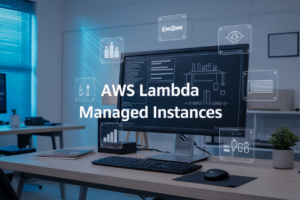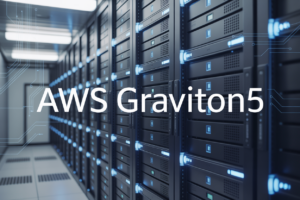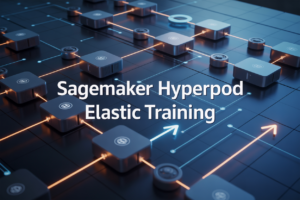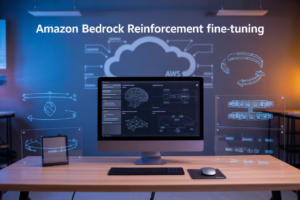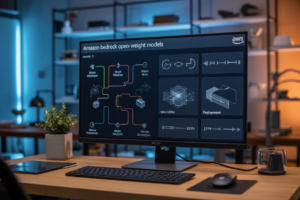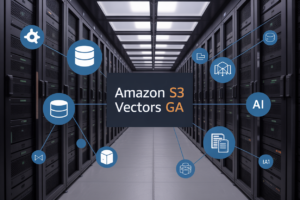Ever spent 48 sleepless hours troubleshooting a Kubernetes deployment only to discover it was a simple configuration issue? You’re not alone. Container orchestration is powerful, but the learning curve can feel like scaling Everest in flip-flops.
Here’s the good news: AWS Elastic Kubernetes Service (EKS) combined with proper CI/CD pipelines can transform that nightmare into a streamlined process.
In this guide, we’ll walk through creating and managing AWS EKS with CI/CD practices that actually work in production environments. No theoretical fluff—just battle-tested approaches that have saved our team countless headaches.
But before we dive into the technical details, there’s one critical mindset shift most teams miss when approaching Kubernetes that makes the difference between constant firefighting and peaceful weekends.
Understanding AWS EKS Fundamentals
What is Amazon EKS and why it matters for containerized applications
Amazon EKS is AWS’s managed Kubernetes service that handles the heavy lifting of running Kubernetes clusters. It’s a game-changer for teams who want to focus on building apps, not babysitting infrastructure. EKS automatically patches, upgrades, and scales the control plane, saving you from the operational headaches of DIY Kubernetes.
Setting Up Your EKS Environment
A. Prerequisites and tooling installation
Getting your EKS environment up and running isn’t rocket science, but you’ll need some tools first. Install AWS CLI, kubectl, eksctl, and Helm on your machine. Make sure your AWS account has proper permissions too. These basics save you headaches later when you’re knee-deep in Kubernetes configurations.
Building a CI/CD Pipeline for EKS
A. Selecting the right CI/CD tools for Kubernetes
Picking CI/CD tools for Kubernetes isn’t just about brand names. It’s about what fits your workflow. Jenkins brings flexibility but requires maintenance. CircleCI offers simplicity but less customization. GitLab CI integrates seamlessly with repositories. AWS CodeBuild handles heavy lifting without server management. Your choice should match your team’s skills and project needs.
Deployment Strategies for EKS Applications
Implementing blue-green deployments on EKS
Tired of risky deployments? Blue-green is your answer. Deploy your new version (green) alongside production (blue), test it thoroughly, then flip traffic over with a simple DNS change or service update. Zero downtime. Users never feel a thing. When things go south, switch back instantly.
Scaling Your EKS Infrastructure
A. Implementing horizontal pod autoscaling
Ever tried running a store with just one employee during Black Friday? Disaster, right? HPA in Kubernetes works the same way – automatically scaling your pods up when traffic spikes and down when it slows. Just set CPU/memory thresholds, and your EKS cluster handles the rest, keeping your apps responsive without breaking a sweat.
Monitoring and Observability
Monitoring and Observability
A. Setting up CloudWatch for EKS monitoring
Stop flying blind with your Kubernetes clusters. CloudWatch gives you that X-ray vision into EKS performance without the complexity. Just enable Container Insights through the AWS console or CLI, and boom—you’ve got metrics, logs, and alarms that actually make sense.
Security Best Practices for EKS
A. Securing cluster access with IAM and RBAC
Lock down your EKS cluster properly or you’ll regret it later. Combine AWS IAM with Kubernetes RBAC for tight access control. IAM handles authentication (who you are), while RBAC controls authorization (what you can do). This two-layer approach keeps your cluster safe from unauthorized access.
Cost Optimization Strategies
Understanding EKS pricing model
EKS isn’t cheap – you’re paying $0.10 per hour just for the control plane. That’s roughly $73 monthly before you even add worker nodes. The real costs come from EC2 instances, EBS volumes, and network traffic. Don’t forget hidden expenses like load balancers and NAT gateways that can sneak up on your bill.
Implementing Spot Instances for non-critical workloads
Spot instances can slash your EC2 costs by up to 90%. Perfect for stateless workloads, dev environments, and batch jobs. Just remember they can disappear with 2 minutes’ notice, so build resilience with node groups mixing Spot and On-Demand instances.
Right-sizing your clusters and applications
Most Kubernetes clusters are seriously overprovisioned. Track actual resource usage with tools like Prometheus and right-size your requests and limits. Consider Vertical Pod Autoscaler to automatically adjust resources based on actual consumption patterns.
Tools and practices for ongoing cost management
Kubecost gives you visibility into namespace and pod-level spending. AWS Cost Explorer helps identify spending trends. Tag everything meticulously for accurate attribution. Consider Graviton instances for 40% better price-performance. Schedule dev clusters to shut down outside business hours.
AWS EKS offers a powerful foundation for containerized applications, streamlining your Kubernetes journey from initial setup through advanced deployment strategies. The integration of robust CI/CD pipelines ensures smooth, automated delivery while various scaling options help your infrastructure adapt to changing demands. With proper monitoring, security practices, and cost optimization strategies in place, your EKS environment becomes not just functional but truly enterprise-ready.
As you embark on your EKS implementation, remember that success comes from balancing technical excellence with operational pragmatism. Start with the fundamentals, embrace automation early, and continuously refine your approach as you gain experience. Whether you’re just beginning with containerization or looking to enhance your existing Kubernetes workflows, AWS EKS provides the tools and flexibility to build resilient, scalable applications that meet your organization’s evolving needs.











